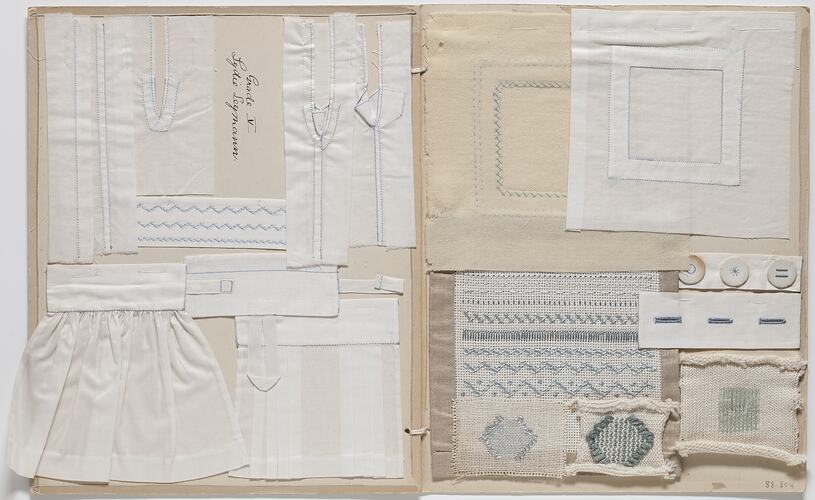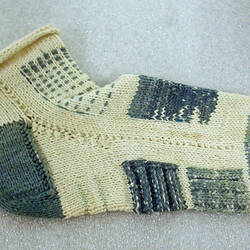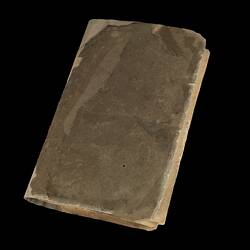Summary
Alternative Name(s): Workbook, Sampler
Two cardboard sheets with samples of different kinds of needlework, made by Lydie Hooper circa 1911-1912. The sampler includes samples of gathering, pleating, hems, patches, seams, button holing, darning and embroidery border stitch.
Lydie migrated to Australia form Switzerland in 1911, aged 14, to live with her aunt and uncle, Dr and Mrs Dunbar Hooper, in Toorak. She attended private lessons with Janet Mitchell, the youngest daughter of Lady Mitchell. The girls were taught by a governess at the Mitchell's home in Gipps Street, East Melbourne. They had normal school lessons in the morning, and then in the afternoon had lessons in sewing, piano, French and German. The sewing lessons, for which Lydie received this certificate, were examined by an external examiner under the auspices of the Melbourne Institute for the Advancement of Plain Needlework. Lydie described the lessons that she had as 'an Australian Finishing School'.
Lydie was born Lydie Leymann, in Switzerland circa 1897, and migrated to Melbourne in 1911 at the age of 14. She lived with her aunt and uncle, Dr and Mrs. Dunbar Hooper, in Toorak. Lydie was unable to return to Switzerland because of the outbreak of World War I, so remained in Australia and in 1920 changed her name by deed poll to become more closely identified with her uncle's family.
The family were well off and reguarly appeared in the social pages of Melbourne papers. Lydie's uncle was a well respected doctor and the son of Sir William Roe Hooper. Her aunt was Swiss and had come with Sir Henry and Lady Loch as governess to their daughters; she had met Hooper while he was medical adviser to the staff at Government House, Melbourne. The couple's wedding reception in 1888 was celebrated at Government House, with Sir Henry Lock giving the bride away at Christ Church, South Yarra, and amongst the distinguished guests was the Grand Duke Alexander of Russia.
Physical Description
Two cardboard sheets with samples of different kinds of needlework tacked to them. Samples include gathering, pleating, hems, patches, seams, button holding, darning and embroidery border stitch. The visible sewing is done in blue cotton.
More Information
-
Collecting Areas
-
Acquisition Information
Donation from Miss Lydie Hooper, 28 Nov 1988
-
Maker
Miss Lydie Hooper, Melbourne, Greater Melbourne, Victoria, Australia, circa 1911-1912
-
Place Used
Melbourne, Greater Melbourne, Victoria, Australia, circa 1911-1912
-
Classification
-
Category
-
Discipline
-
Type of item
-
Overall Dimensions
31 cm (Length), 51 cm (Height)
-
Keywords
Domestic Life, Domestic Science, Education, Immigration, School Students' Work, Sewing, Swiss Immigration, Children


